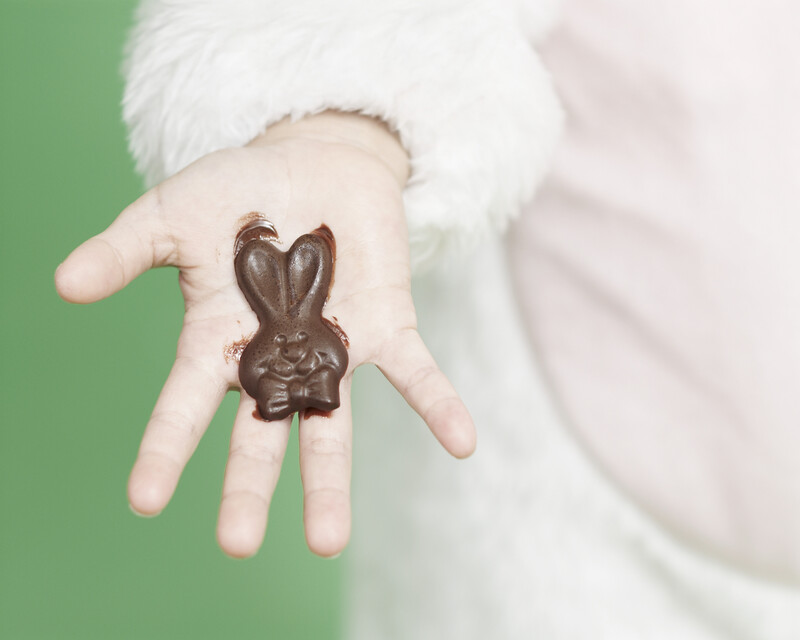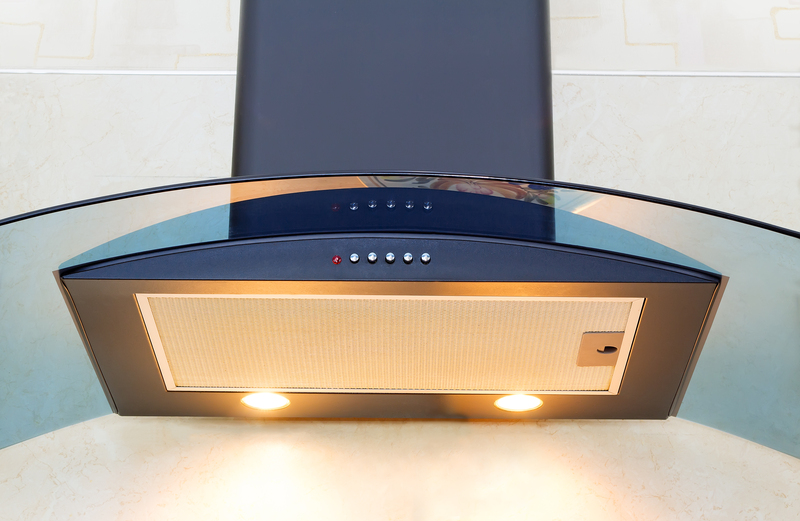Proven Methods for Removing Stovetop Burnt-on Residue
Posted on 24/06/2025
Proven Methods for Removing Stovetop Burnt-on Residue
Every home chef has experienced it: a delicious meal gone wrong, resulting in stubborn, burnt-on residue on the stovetop. Not only does it look unsightly, but leftover stains and grime can affect the performance of your stove and even damage its surface over time. With the right knowledge and techniques, however, you can restore your cooking space to its sparkling best. In this comprehensive guide, we explore the most effective, proven methods for removing stovetop burnt-on residue, catering to different types of stovetops and stubbornness of stains. Whether you're dealing with a glass, ceramic, or gas stovetop, you'll find step-by-step solutions here that are safe, effective, and easy to follow.

Understanding Stovetop Burnt-On Residue
Before delving into removal techniques, it's essential to understand how burnt-on residue forms and why it can be so difficult to eliminate. When food, grease, or sauces spill over and make contact with a hot surface, they quickly cook and carbonize, adhering tenaciously to the stovetop. The longer this residue remains, the harder it gets--making prompt removal ideal. However, even long-neglected messes can be banished with the right approach.
Main Causes of Burned-on Messes
- Spills from boiling-over pots and pans
- Cooking with high sugar content sauces
- Frying with oil or butter at high heat
- General lack of regular cleaning
Each of these causes can leave tough-to-remove residue on both gas burners, electric coils, ceramic, and glass stovetops. The good news? There's a solution for every mess.
Preparation: Safety and Supplies
Before you begin, it's crucial to turn off and unplug your stovetop, allowing it to cool completely. This not only protects you from burns, but also prevents possible damage to the appliance as sudden temperature changes can cause cracking, especially in glass and ceramic stovetops.
What You'll Need:
- Baking soda
- White vinegar
- Lemon juice (optional)
- Dish soap (degreasing variety preferred)
- Commercial stovetop cleaner (for tough jobs)
- Microfiber cloths, non-abrasive sponges, or scrubbers
- Plastic scraper or old credit card
- Paper towels
- Gloves (to protect hands)
With your supplies and safety measures in place, you're ready to tackle even the most stubborn burnt-on stovetop residue!
Step-by-Step Proven Methods for Removing Burnt Stovetop Residue
Let's break down the most effective stovetop cleaning methods, from gentle to heavy-duty, to suit every type of stain and surface.
1. The Gentle Approach: Soap and Water
For fresh spills or light burn marks, sometimes simple soap and water is all you need.
- Mix a few drops of dish soap with warm water.
- Dampen a soft cloth or sponge and gently scrub the affected area.
- For glass or ceramic cooktops, use a circular motion to avoid scratching.
- Rinse with a clean damp cloth and dry thoroughly.
This method is safe for all surfaces and is ideal for daily maintenance.
2. Baking Soda & Vinegar Paste: The Classic Remedy
Baking soda's gentle abrasiveness makes it invaluable in removing burnt-on stovetop residue without scratching delicate surfaces.
- Sprinkle a generous amount of baking soda over the burnt areas.
- Pour or spray white vinegar onto the area. The mixture will fizz and bubble, helping to break down grime.
- Allow the fizzing to subside; let the paste sit for 15-20 minutes to loosen the residue.
- Use a damp microfiber cloth or non-abrasive sponge to wipe away the paste and residue.
- For stubborn spots, repeat the process or let the paste sit longer.
Bonus Tip: Add a squeeze of lemon juice for extra degreasing power and a fresh scent.
3. The Power of Steam: Loosening Tough Buildup
If you have access to a handheld steam cleaner, this can be one of the most powerful methods for removing burnt-on gunk from your stovetop--especially for gas burners and around electric coils:
- Fill the steam cleaner with water and allow it to heat.
- Direct the steam nozzle at the hardened residue, moving slowly to saturate and loosen the grime.
- Wipe away softened debris with a microfiber cloth.
- Repeat as needed for heavy buildup.
This approach is highly effective, natural, and requires no chemicals.
4. Using a Plastic Scraper or Credit Card
After softening stains with the baking soda method or steam, use a plastic scraper or an old credit card to gently lift off embedded, burnt-on layers:
- Hold the scraper at a 45-degree angle.
- Carefully push beneath the loosened residue, taking care not to gouge the surface.
- Wipe away loosened deposits, and repeat as needed.
Never use metal blades or abrasive pads on glass or ceramic cooktops as these can cause irreversible scratches.
5. Commercial Cream or Gel Stovetop Cleaners
For severely burnt-on residue that resists home remedies, specialized cleaners are designed for removing tough stains from all stovetop types. Look for brands like Bar Keeper's Friend, Cerama Bryte, or Weiman.
- Apply the product according to the directions (usually squeezing a small amount onto the affected area).
- Allow to sit for several minutes to penetrate burnt spots.
- Use a non-abrasive scrub pad to work in the cleaner.
- Wipe away with a damp cloth and dry completely.
These commercial formulas are highly effective at dissolving carbonized food and are generally safe for delicate surfaces. Always spot test first.
6. Dishwasher Detergent Method
Gel dishwasher detergent, which contains strong degreasing agents, can be a lifesaver for burnt stovetop residue that just won't budge:
- Apply a small dab of detergent directly on the stain.
- Dampen a cloth and spread the detergent in a thin layer over the mess.
- Allow it to sit for 10-15 minutes.
- Gently scrub with a non-abrasive scrubber in circular motions.
- Wipe away residue, rinse with clean water, and dry.
This method is surprisingly potent and perfect for tackling old, greasy stains.
7. Hydrogen Peroxide & Baking Soda for Extreme Buildup
For the most stubborn, burnt-on gunk, this chemical combination can break through layers of blackened debris without damaging the stovetop.
- Mix 1-2 tablespoons baking soda with just enough hydrogen peroxide to form a paste.
- Apply the paste generously to the worst areas.
- Let sit for 15-20 minutes.
- Wipe away with a damp cloth, scrubbing gently as needed.
- Rinse and dry thoroughly.
This method is particularly effective for ceramic and glass stovetops, as it removes discoloration as well as sticky messes.
Specialized Techniques for Different Stovetop Types
Not all stovetops are created alike. Here's how to tailor your cleaning approach:
Glass & Ceramic Stovetops
- Never use abrasive pads, steel wool, or razor blades.
- Stick with baking soda, commercial cream cleaners, and soft microfiber cloths.
- Immediate cleaning after cooling preserves the flawless look.
Stainless Steel Stovetops
- Use baking soda and mild dish soap, scrubbing along the grain of the steel.
- Avoid harsh abrasives to prevent scratching and dulling the surface.
- Polish with a stainless steel cleaner after cleaning for added shine.
Electric Coil Stoves
- Remove coils (if possible) and treat drip pans separately using the above methods.
- Let coils cool completely before cleaning; wipe with a damp cloth--never submerge in water.
Gas Burner Stoves
- Remove burner grates and caps; soak them in soapy water and scrub clean.
- Use a toothbrush or soft brush for hard-to-reach spots around the burners.
- Clear any blocked burner holes with a pin or needle; dry thoroughly before reassembling.
Preventative Tips for a Cleaner Stovetop
- Clean up spills immediately after cooking--once the surface cools--to prevent carbonization.
- Wipe down daily with a damp cloth to prevent buildup of grease and bacteria.
- Use burner liners and always cover pans to minimize spatter.
- Conduct a deep-clean once a week or after heavy use.
- Never use harsh chemicals or metal tools on delicate stove surfaces.

Frequently Asked Questions
Q1: How often should I clean my stovetop to avoid burnt-on residue?
Answer: Wipe down your stovetop after every use to prevent small spills from turning into tough, burnt-on stains. Schedule a deep-clean at least once a week or whenever you notice residue forming.
Q2: Is it safe to use a razor blade on glass stovetops?
Answer: It is generally not recommended because it can cause scratches. Some manufacturers approve specific razor scrapers, but always consult your stove's manual and use extreme care.
Q3: Can I use bleach on my stove to remove burnt-on stains?
Answer: Bleach is not effective for breaking down food residue and can discolor or damage certain stovetop finishes. Stick to baking soda, vinegar, and commercial cleaners formulated for stovetops.
Q4: My ceramic stovetop has white cloudy stains after cleaning. What went wrong?
Answer: This might be due to mineral deposits or residue from cleaning agents. Buff with white vinegar and a microfiber cloth to remove the haze.
Conclusion: Enjoy a Sparkling-Ready Stove--Every Time
Stovetop burnt-on residue need not be a permanent eyesore or a dreaded chore. By following these proven, effective methods--from gentle daily cleaning to powerful deep-cleans--you can restore your stove to its prime condition, ensuring safety, efficiency, and a welcoming kitchen atmosphere. Put these expert-recommended methods for removing stovetop burnt-on mess into practice, and enjoy cooking in a clean, fresh environment every day!
Remember: Consistency is key. The sooner you address spills and stains, the simpler your task becomes. For every type of stovetop, there's a safe and effective solution designed to preserve its beauty and maximize lifespan.
If you've found this guide useful, share it with friends and keep your kitchen sparkling clean!




